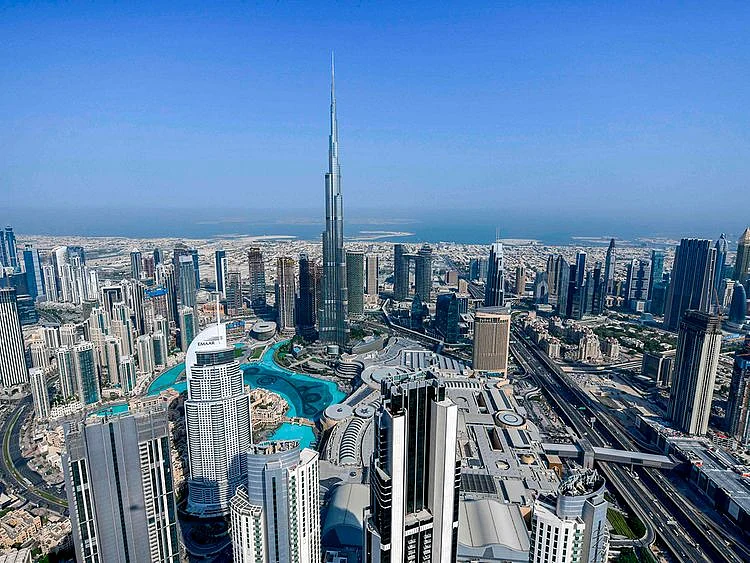Also In This Package
Photos: Oldest Syrian woman shows her ID from 1901
Cloud seeding in UAE: Modern tech that’s making it rain
Discover latest fashion trends with #SHEINbacktoschool
From the Editors: UAE shows the way to combat COVID-19
How to help children deal with COVID-19 loneliness
Watch: Gulf’s longest rail tunnel now fully excavated
When new communities are built, the underlying non-quantitative verve that drives the process is the hipster’s quest for cool. From the newer phases of Arabian Ranches to Mudon and Al Furjan, Dubailand and even parts of Karama and Deira, once ignored areas seem to promise insider status for anyone moving there - an entrée into a rarefied club of fellow travellers.
In the process, Dubai has become both a product and a brand, one synonymous with the bespoke. That brand has now spread around the world, even to many of the very places from which immigrants once came in search of a better life.
When we look at cross-sectional returns of communities, we observe that when city-wise demand increases, it spills over into areas regardless of whether there have been improvements in that area or not. The recent spike in demand for villas has led to an upsurge of values in areas like the Palm Jumeirah, Emirates Hills, Dubai Hills, Meydan and Arabian Ranches (where building and “gentrification” is taking place). And in areas where there is no expectation of such improvements, like the Villa project at Silicon Oasis and Liwan, Majan and Sports City.
We see positive city-wide demand shocks endogenously feed into the process of gentrification itself as capital values start to rise. Already in this cycle, we have seen “secondary” neighborhood prices rise by double-digits, even though these rises pale in comparison to upscale neighborhoods.
Value from closeness
Proximity to the upper echelon neighborhoods also play a factor here; we have seen prices in JLT have risen by virtue of its proximity to the Marina, even though the neighborhood “feel” has vastly changed in the last few years. These price trends were different from the last cycle, whereby the trends were driven by the mid-income communities.
What we see further is that intra-neighbourhood price differentials are as large as inter-neighborhood effects. In other words, price rises for new builds within a community such as the Palm has been similar to the price rise differentials between Jumeirah Village (where newer builds are starting to come to fruition) and Sports City, where activity has been more somber.
In both cases, the difference on account of gentrification has been between 25-35 per cent, and even more in particular cases. In upcoming areas where bargain prices are available, investors get caught up in stalled projects, leading to these areas being ignored once again until the next cycle of capital infusion leads to improvements and new builds.
Crowded out by time
Of course, the great irony of gentrification is that newcomers moving into an area for its character, charm and individuality set into motion a concatenation of economic, social and cultural forces that ultimately diminish the very qualities that drew them to the place. Time and again, the unwitting agents of this upscaling are artists, workers, writers and other cash-poor creative types, who colonize a place no one else seems to care about and create by their very presence a “scene” that in time draws others.
Before long come savvy developers, followed by cafes, restaurants and shops that cater to the well-heeled with jobs in banks and the tech sector. By now, the penniless creatives that set the whole thing into motion are long gone, and the “authenticity” disappears, as capital pours in to cater to the increasingly affluent.
The current feel of JLT is vastly different from that of Dubai Marina, but as rents and values rise, there becomes an overlap, a process that was observed after the first boom-bust cycle of 2008-10. Herein lies one of the great truths of urban life today, not just in Dubai but in cities around the world.
Creativity and authenticity intertwine to create neighborhoods, and act in competition to the motor of gentrification. Dubai’s new urban plan relieves this tension between the qualitative and the quantitative forces, allowing both to co-exist in a sphere where the authenticity of the city remains intact and allowing it to serve as a magnet for new talent.
Capital appreciation that is now part of the landscape of real estate in Dubai once again must make way for these districts to continue to thrive - with the Indian and Pakistani diaspora, the Filipino restaurants, the Bangladeshi newsstands and Chinese takeout, where life and creativity synergize to bubble with opportunities anew.
Network Links
GN StoreDownload our app
© Al Nisr Publishing LLC 2025. All rights reserved.
